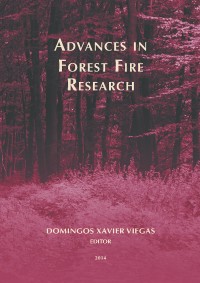Please use this identifier to cite or link to this item:
https://hdl.handle.net/10316.2/34162| Title: | Application of simulation modeling for wildfire risk assessment and management | Authors: | Salis, Michele Ager, Alan A. Finney, Mark A. Alcasena Urdiroz, Fermin Arca, Bachisio Muñoz Lozano, Olga Santoni, Paul Spano, Donatella |
Keywords: | Simulation modeling;Fire risk assessment and management;Mitigation strategies;Burn probability;Case studies | Issue Date: | 2014 | Publisher: | Imprensa da Universidade de Coimbra | Journal: | http://hdl.handle.net/10316.2/34013 | Abstract: | The growing incidence of large wildfires impacting urban interfaces and values of interest over the past decades has led to extensive research on decision support tools for fire risk assessment and management. The inherent complexity of risk management and fuel treatment planning has led to a rapid increase in the application of fire spread and behavior modeling software for both research and operational applications. Simulation models are now routinely used to analyze potential fire behavior and to develop risk assessments and mitigation strategies, over a range of scales, from forest stands (a few hectares) to large landscapes. Fire behavior models mainly used for fuels planning in the US and elsewhere include NEXUS, FVS-FFE, FARSITE, FlamMap, RANDIG, and FSIM. The geospatial interface to these models, ArcFuels, is used to streamline preparation of input files and post-process simulation outputs. The majority of these landscape fire simulation models use the minimum travel time algorithm, a compact fire simulation algorithm that makes it computationally feasible to simulate thousands of fires and generate burn probability and intensity maps over large areas. The outputs can be used to study wildfire topology on complex landscapes, and analyze uncertainty associated with wildfire events in terms of timing, location, intensity, and duration. Wildfire simulation models have also been coupled with spatial optimization software to design efficient landscape fuel treatment plans. From a risk assessment standpoint, the key benefit of newer wildfire simulation approaches, compared to previous work on spatial patterns in ignition patterns, is that the former accounts for risk factors that influence landscape wildfire spread, while the latter does not. Overall, properly calibrated and validated, wildfire simulation methods offer a dramatic increase in information content for conservation, restoration, and fire protection planning on fire-prone landscapes. Risk assessments using simulation methods have now been completed for a range of issues including carbon offsets, endangered wildlife species, habitat conservation, watersheds and WUI protection, and protection of biodiversity. In this talk, we will discuss the application of wildfire simulation models and geospatial tools for wildfire risk assessment and management for several study areas including the western US and the Mediterranean Basin. | URI: | https://hdl.handle.net/10316.2/34162 | ISBN: | 978-989-26-0884-6 (PDF) | DOI: | 10.14195/978-989-26-0884-6_181 | Rights: | open access |
| Appears in Collections: | Advances in forest fire research |
Files in This Item:
| File | Description | Size | Format | |
|---|---|---|---|---|
| 978-989-26-0884-6_181.pdf | 1.99 MB | Adobe PDF |  |
Items in DSpace are protected by copyright, with all rights reserved, unless otherwise indicated.
